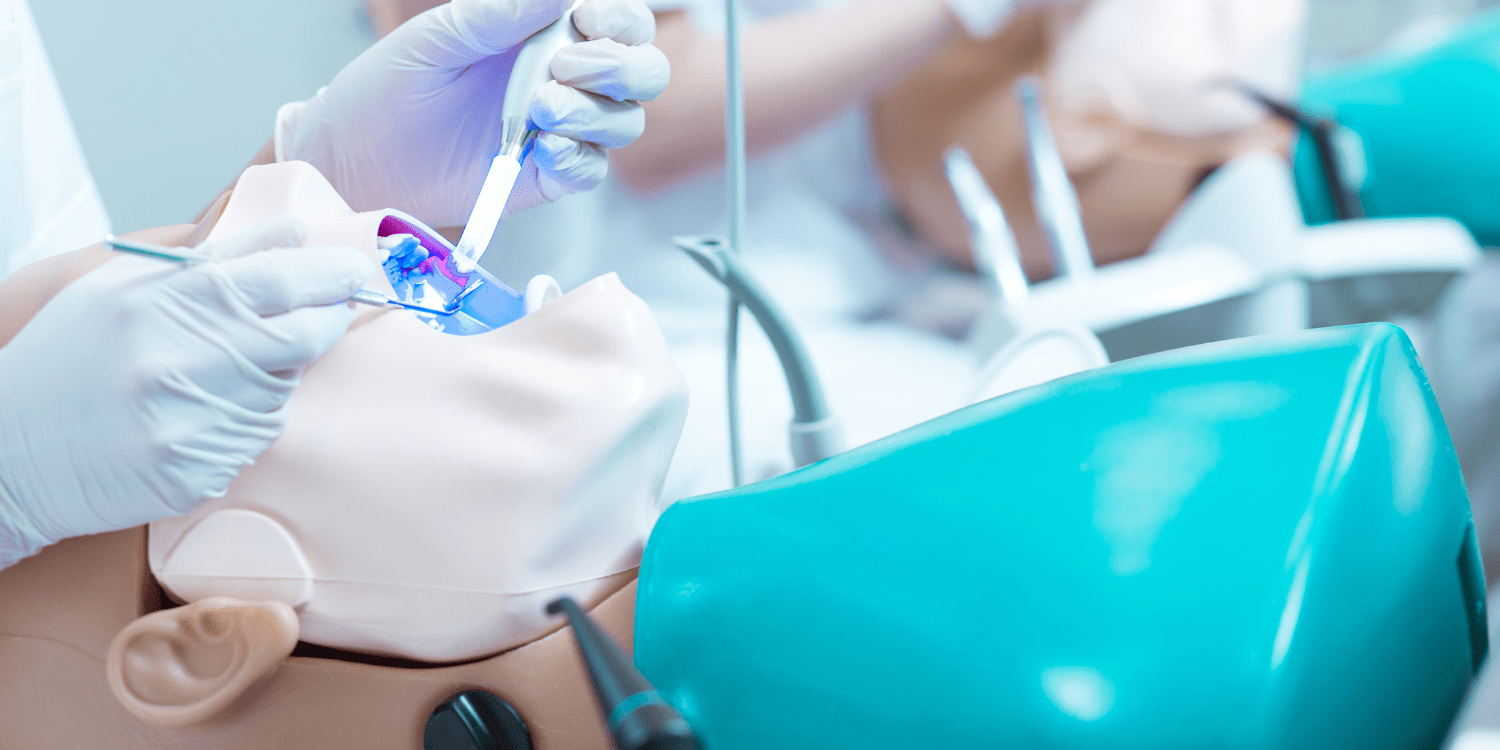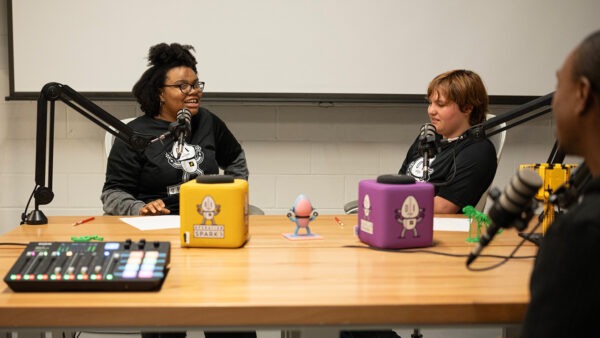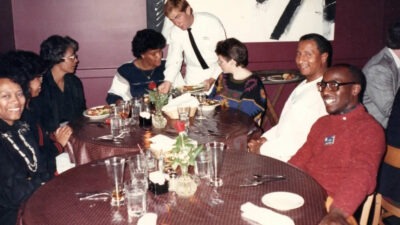In fall 2022, Skagit Valley College in Washington State received accreditation for its Dental Therapy program, becoming the second in the U.S. to offer education and training for dental therapists. We talked with Caroline Brunton, program officer at the W.K. Kellogg Foundation, about this latest milestone in this national movement to increase equitable access to quality oral health care for all children and families.
First, what is a dental therapist and what made this possible?
Caroline Brunton: Dental therapists are licensed dental providers that are part of the dental team and perform a limited set of the most common dental procedures, such as basic fillings and restorations. They are different from dental hygienists, who mostly work on the soft tissue of the mouth. Together with dentists, dental hygienists and dental assistants, dental therapists provide holistic oral health care to patients in many areas of the country and sovereign tribal nations. Dental therapy is not a new profession – just new to the United States. It’s a profession that has been safely practiced all over the world for more than a century.
Dental therapists were first introduced to the U.S. by Alaska Native communities that did not have access to regular, preventive oral health care. When a dentist visited communities, it was at a crisis point. Many people, including children, needed extractions and were often graduating high school with dentures. Dentists brought to villages didn’t know Alaska Native customs or culture and often didn’t stay long. The Alaska Native communities decided to train providers from their communities who would stay and serve the dental care needs, so that’s how dental therapy began in Alaska.
With partnership and support from the Alaska Native Tribal Health Consortium (ANTHC), a few community members went to New Zealand to train as dental therapists. ANTHC also worked hard to build the Alaska Dental Therapy Education Program (ADTEP), administered through a partnership with Illisagvik College, and began training their own providers. To date, dozens of dental therapists have graduated from the ADTEP, and in 2020, it became the first accredited dental therapy education program in the United States.
Why was the accreditation of Skagit Valley College so important?
Caroline Brunton: While Skagit Valley College (SVC) was the second dental therapy education program in the country to become accredited, it was the first to receive accreditation after Alaska’s longstanding program. The way the accreditation standards are written, new programs cannot begin educating students until the program receives accreditation. And it requires a large investment of capital up front to build a program that meets the standards. By being the first new program, SVC took on a lot of that risk. Now the schools that come after have a roadmap – they know how it can be done.
What does it mean for students interested in pursuing dental therapy from other places across the country?
Caroline Brunton: The accreditation is important for students from states who have more recently passed legislation that authorizes the practice of dental therapy. Many of those statutes require that students attend accredited schools. As of today, the only schools with accreditation are the programs in Alaska and Skagit Valley College in Washington. Not everybody has the ability to go to Alaska for training, and the Alaska program has limited slots that are prioritized for Alaska Native students. The new school provides more options for potential students.
Who benefits from a dental therapy program like this one when it’s accredited?
Caroline Brunton: Many people benefit from the accreditation of new dental therapy education programs.
First of all, dental therapy students benefit. Accreditation opens pathways to resources like loans and scholarships from the federal government, which were not available prior to accreditation.
Other dental therapists also benefit. Not only does it further legitimize and institutionalize their chosen profession, but it also provides other career options. Dental therapists don’t have to stay in patient care forever, or even full time. The rise of dental therapy education programs opens avenues to teaching and scholarship for dental therapists. It will be invaluable for students to hear first-hand from dental therapists who have practiced.
Finally, communities will benefit from dental therapy education programs. We are in an oral health crisis in the United States, and it has only gotten worse since the beginning of the pandemic. The Kaiser Family Foundation estimates that there are almost 70 million people living in dental health care professional shortage areas. If we can train more oral health providers, we can get more people access to the oral health care that they need.
Thinking of Dental Therapy as a movement, where are we now in that movement and where does the movement need to grow?
Caroline Brunton: This movement has been about following the lead of communities from the very beginning. As more communities have been given the time, space and resources to learn about dental therapy, many have chosen to take up the mantle. Over the past several years, there has been rapid expansion of states authorizing dental therapy, but that alone is not enough. To continue growing, all of the actions happening – more states authorizing the practice, more seats in educational programs available to interested students, more dental therapists practicing – need to continue to happen.
One important area of growth that I’d be remiss not to mention is the establishment and growth of the American Dental Therapy Association (ADTA), the trade group that represents the dental therapy profession. This is an important step in advocacy for dental therapists, who have long had to rely on others to give voice to their profession. Through ADTA, they are building the infrastructure advocate for themselves based on their own experience, which is a really powerful tool.
How can people get involved to bring dental therapy to their own communities?
Caroline Brunton: The first step I’d recommend is to see if your state is one of the 13 states that currently authorizes dental therapists to practice in some or all settings. The National Partnership for Dental Therapy has great resources to learn more about the profession and the movement. Of course, the W.K. Kellogg Foundation has also put all of the resources from its almost two decade involvement with dental therapy online, so they can continue to be referenced and used by the movement. Those are both really great places to start.
What are the next signs of progress that we can expect?
Caroline Brunton: There are several more schools that are on the pathway to accreditation as we speak. There are three existing programs in Minnesota that are in the process of pursuing accreditation, and one new program in Vermont. Several other schools, including some tribal colleges, universities and community colleges, are exploring the feasibility of adding a dental therapy program.
I think one of the really exciting opportunities right now is through the expansion of the Community Health Aide Program (CHAP) through the Indian Health Service. CHAP is a program to improve health care access that was developed for Alaska Native communities and is now expanding to the lower 48 states. Dental therapists are part of CHAP in Alaska, so the expansion of the program provides infrastructure for dental therapy in tribal communities across the United States.
Federal policy has shifted greatly as well. For the first time, dental therapy was a part of a major party platform in the 2020 elections. It was also highlighted as a promising workforce innovation for addressing oral health care challenges in the Oral Health in America report that was published last year by the National Institute for Dental and Craniofacial Research.
Read More:
- Download the free e-book, “For Want of a Dentist: The Rise of the Dental Therapy Movement in Tribal Nations and the U.S., Lessons from the W.K. Kellogg Foundation”
- Every Child Thrives, “Dental therapists in the United States: Advancing health equity”
- Every Child Thrives, “Dental therapists expand access to care”
- Every Child Thrives, “Equity and leadership spur dental therapy tipping point”








Comments